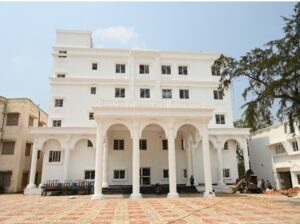New Delhi, India: Due to the unavailability, unaffordability or lack of good user experience of access to internet, both, in rural and urban areas, many students in the government schools are unable to access quality educational content through the internet. Identifying the need to provide regular internet connectivity without hindrance, the state of Maharashtra has planned to adopt Chhota Internet as a technological solution to provide quality education and a better future to the students of upper primary schools.
The installation of this Content Access Management Device (CAMD) will help the children get access to buffer-free focused educational content. It will open doorways to information, knowledge and allow access to increased learning opportunities beyond the classroom.
The success of quality education can be measured by monitoring the performance of the children by the learning management built in the system. Digital literacy is the ability to use online applications, find information through pre-loaded content in an offline mode, assess its quality and value, and make use of it in daily life. Hence, when these students enter the world of work, they would be able to make use of computers and would be digitally literate.
At this historic development, Mr. Sandeep Arya, Chairman & CEO, Chhota Internet said that “In today’s world, the influence of technology on learning is immense. With the announcement and progress of the Digital India Movement, the seeds of building a tech-savvy rural India have been planted successfully. We want to align with this movement through our Chhota Internet platform, and consequently support the SDG-4 of the Sustainable Development Goal, which focuses on ensuring quality education for sustainable development. This will help us in straddling the headwind of this digital wave to transform the education delivery model in India, where there are over six lakh state-run schools.” Adding further Mr. Arya said, “We are welcoming partnerships from corporates, Individuals through the avenue of CSR to help spread this technology in six lakh Indian villages where digital classrooms can help bring wonders in education and skill development outcomes.”
He also mentioned that one of the most important facets of such innovative technology is its ability to allow educationists to deliver educational material digitally over a Wi-Fi network without the need of the internet and in a controlled and responsible manner. The learning progress of the individual student can be monitored, by streaming content that aids classroom learning. As part of the program, the students of the government schools will be provided quality education video and eBook content and reduce the gap between the quality of lectures available to an urban child and the rural child, which would be a very beneficial step for development of rural India.
It would be impossible to take India to the next level without addressing the challenges of education. The quality of education continues to be a matter of concern looking at the dropping attendance rates, lack of trained teachers in the system, non-availability of equipment, and the prevailing issues that inhibit the easy operation of child-centred schools. There is a need to improve the school and classroom environment in order to contribute to the education model in India because these children are the future of our nation and they should be provided necessary means to realise their potential. Thanks to the initiatives by the PM through digital India, rural India is now ready for innovative teaching methods through digital classrooms. All they need is consistent implementation on a large-scale to ensure quality education.
The vision of Chhota Internet is to bridge the gap between learning and growth and erase the educational divide. Chhota Internet will achieve this by bringing students in rural India abreast with the rest of the world, in terms of providing access to a more advanced system of education that is loaded with the latest technological aids, thus, paving the way for future growth via innovative technology.









